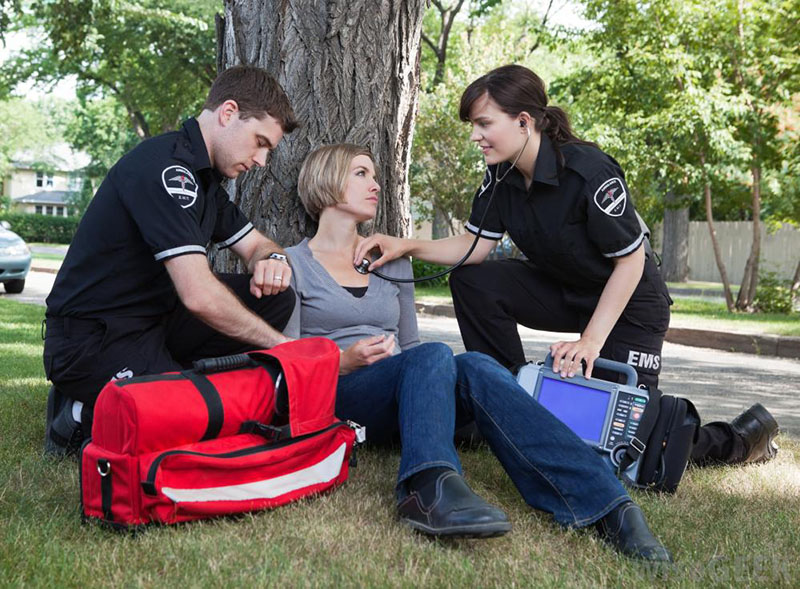The field of emergency medical services is a vital one, and a career in it is rewarding. It’s about providing life-saving assistance. If you’re considering becoming an Emergency Medical Technician (EMT) or even progressing into the highly sought-after role of a paramedic you’re entering a field with tremendous growth opportunities and high demand for skilled professionals. In this post, we’ll guide you through the process to become an EMT and paramedic. We’ll also look at the many options for training, including DSHS approved EMS training courses.

Understanding the significance of EMTs & Paramedics
Emergency Medical Technicians, also known as paramedics or EMTs are the primary emergency responders. They offer immediate assistance. They are specially trained to assess and manage patients and transfer them safely to medical facilities to receive additional treatment. Paramedics and EMTs are vital in stabilizing patients in difficult situations, making split-second decision, and providing compassionate treatment during times of need.
Step 1: Become an EMT:
To become an EMT you will need to successfully complete a range of educational and training programs. These may differ based on the level of certification you want to attain. There are three levels to EMT certification:
1. EMT Basic (EMT B) The EMT Basic certification is an entry-level certificate that is based on between 100-150 hours of instruction. EMT-Bs are educated to provide basic medical services which includes CPR and bleeding control and basic airway management.
2. EMT-Intermediate is a level which requires more instruction. The amount of training required varies from one state to another. This level may be combined with EMT B in certain places however it can also require 200-400 hours of instruction. It can also comprise an intravenous therapy and a broader range of medical skills.
3. EMT-Paramedic: This is by far the highest level of EMT certification. It is a demanding training lasting between 1,000 and 1 800 hours. Paramedics are able to perform a variety of advanced medical procedures such as administering medications in the form of EKGs, interpreting them and advanced airway management.
Step 2: Requiring paramedic certification
To become a Paramedic you have to pass the EMTB or EMTI levels and get some practical experience. Then, you are able to enroll in a paramedic training program, which typically takes one to two years to complete. Through the rigorous training, you’ll be exposed to the most advanced medical topics. You will also acquire the expertise and understanding required to manage difficult scenarios.
Learn more about EMT possibilities for training:
You can select from a wide range of EMT classes, based on your certification level. EMT training is typically offered by community colleges and medical trades schools for all certifications. These programs combine of classes, hands-on instruction and encounters in field and clinic environments.
If you’re looking for a thorough and comprehensive EMT program that could give you a degree from an institution like a college or university They may also provide EMT training on the EMT-Paramedic levels. These programs give you more knowledge of emergency services, and more insight into medical decisions.
Step 4: You must ensure DSHS approved EMS training:
If you’re aspiring to become EMTs and paramedics, it’s essential to ensure that the education program you choose to take is DSHS certified. The Department of State Health Services also known as DSHS accepts EMS Training Courses in order to guarantee high standards of training. By enrolling in a DSHS approved EMS training course, you can rest assured that you are receiving top-notch instruction and meeting the necessary requirements for certification.
EMTs and paramedics are highly regarded professions. EMTs as well as paramedics and other first responders play a crucial roles in providing medical assistance and saving lives in emergencies. In order to begin this life-saving task, EMTs and Paramedics are required to complete the necessary educational and training courses. Based on the level of certification that is desired, applicants can pick from a variety of EMT training options, which include community colleges, medical trade schools, as well as university programs.
In addition to considering the choices for training, it is essential to ensure that the chosen EMS training program is DSHS approved by the DSHS. This will ensure that you receive a high-quality education that is up to the requirements required to obtain EMT certification as well as paramedic certification.
The demand for skilled emergency medical professionals grows, EMS provides a wealth of opportunities for career advancement as well as an opportunity to make a difference in the lives of others. It is possible to start with the position of an EMT or progress towards paramedic status. Your dedication to providing medically critical care will be rewarded with an enjoyable job.
